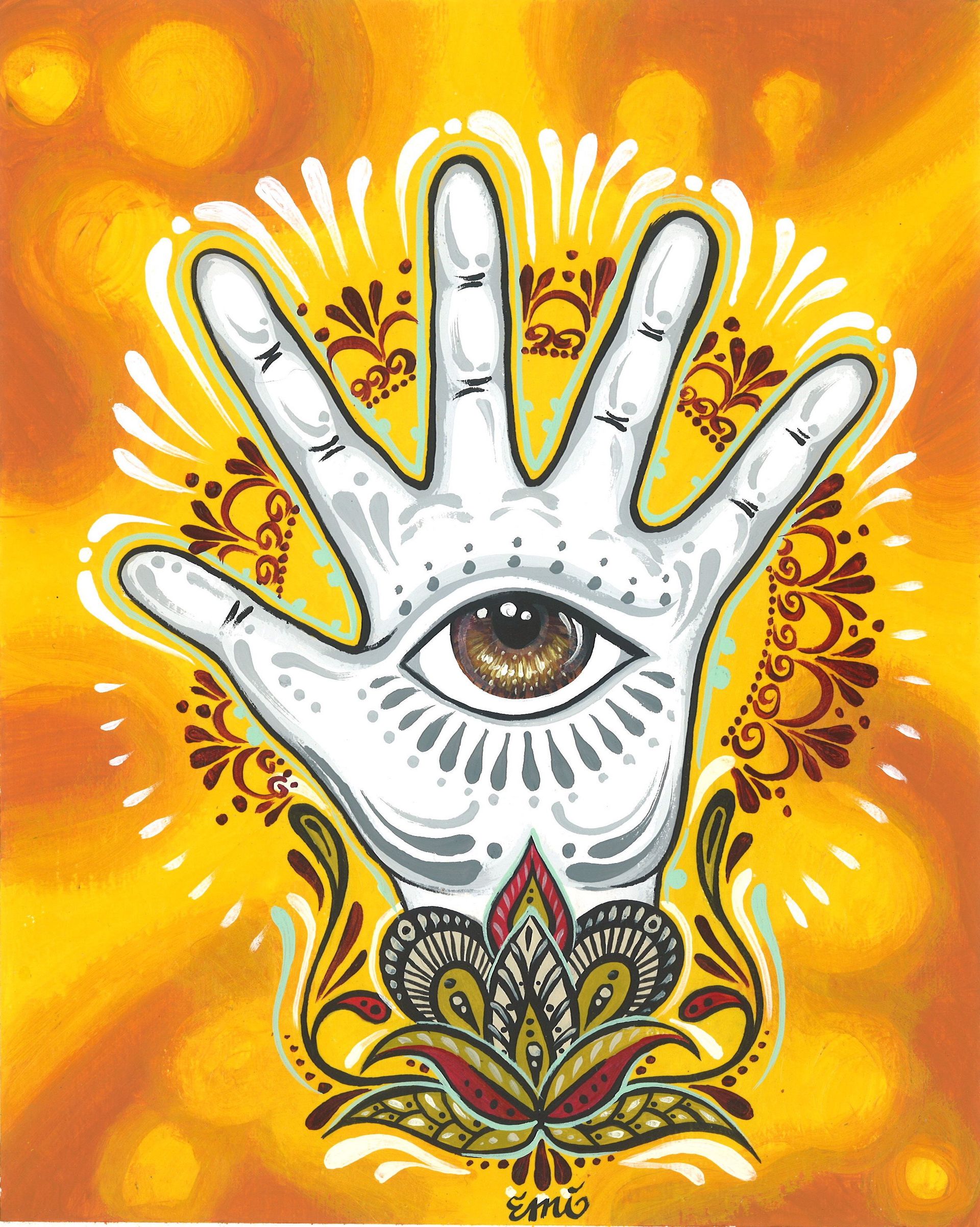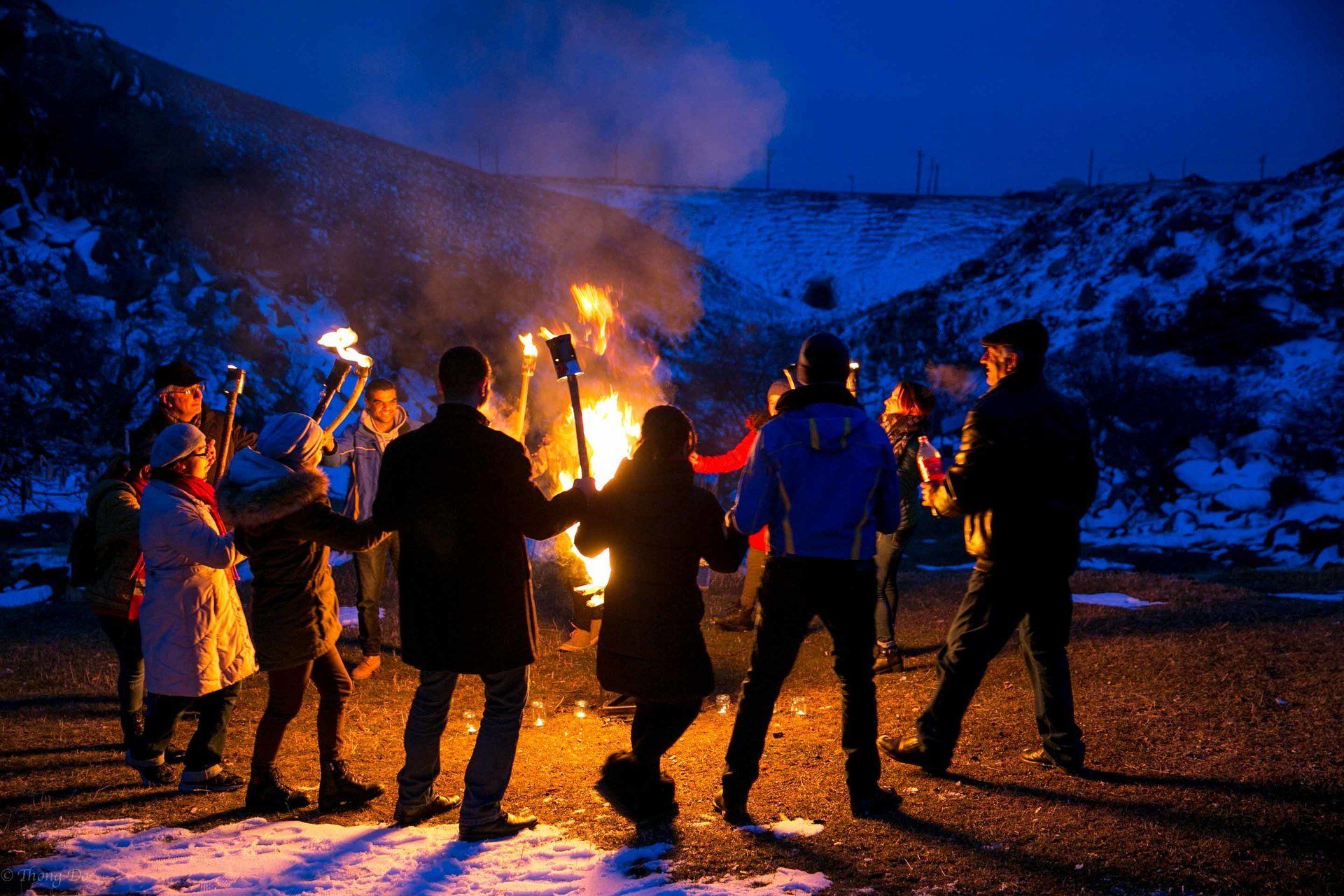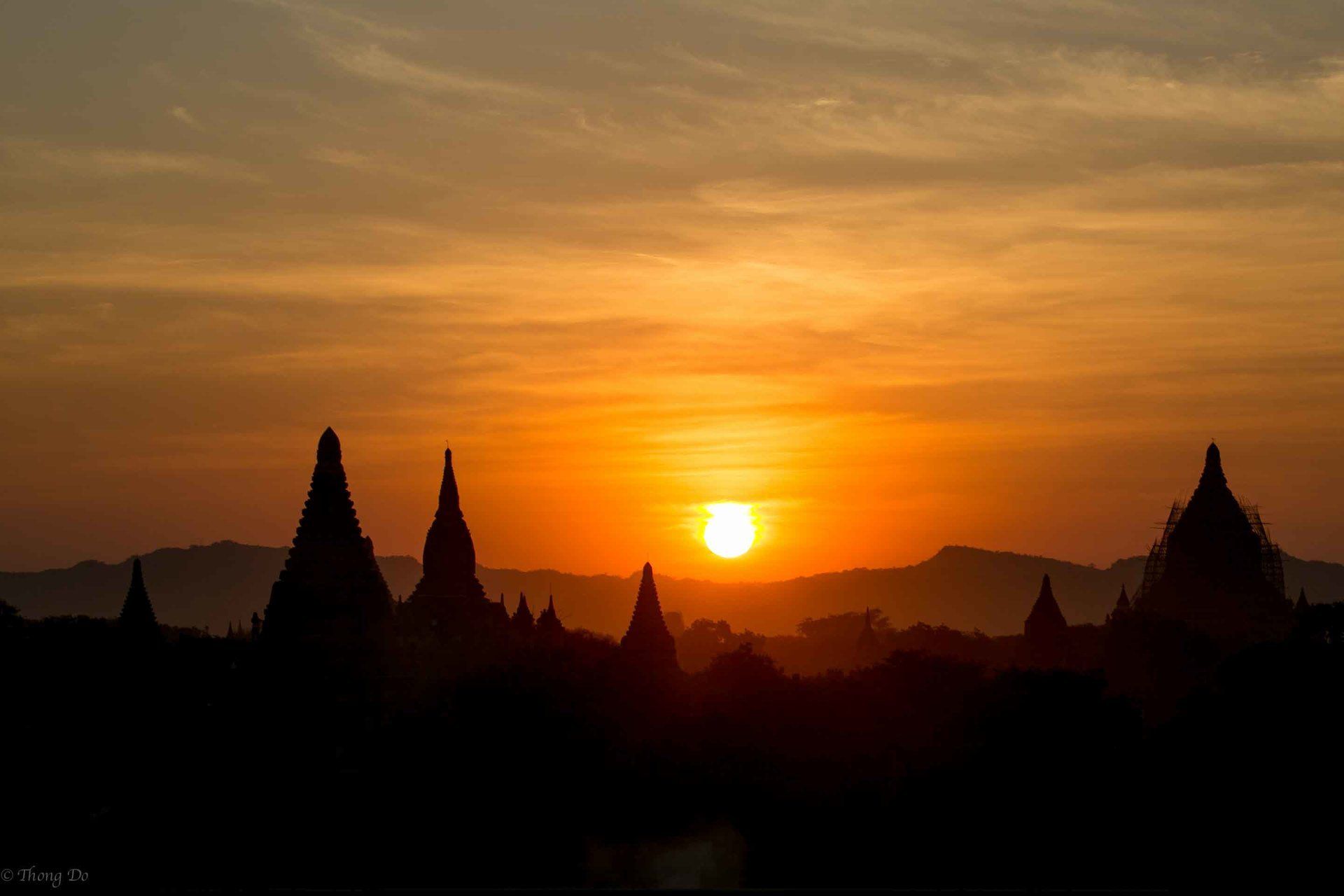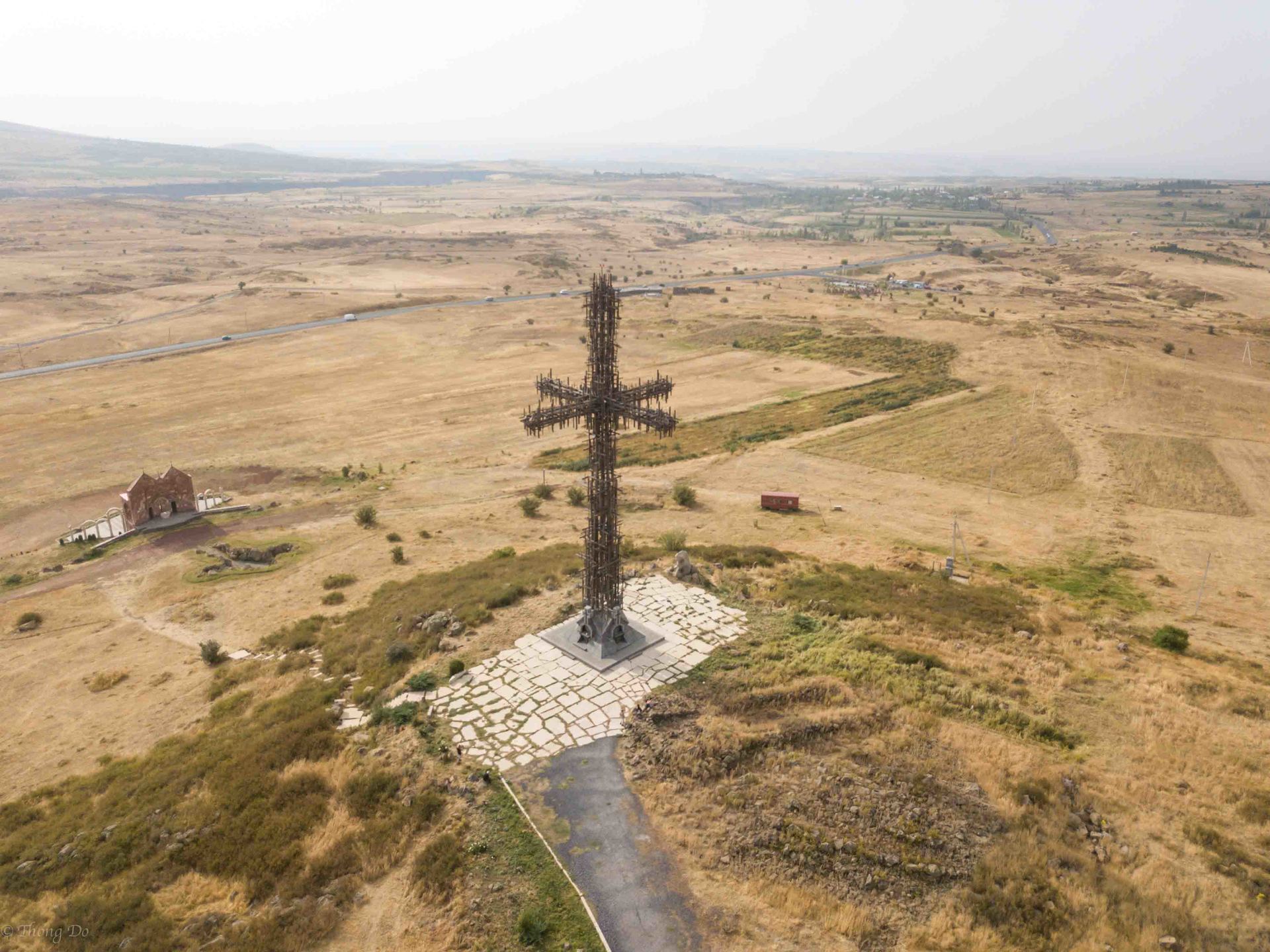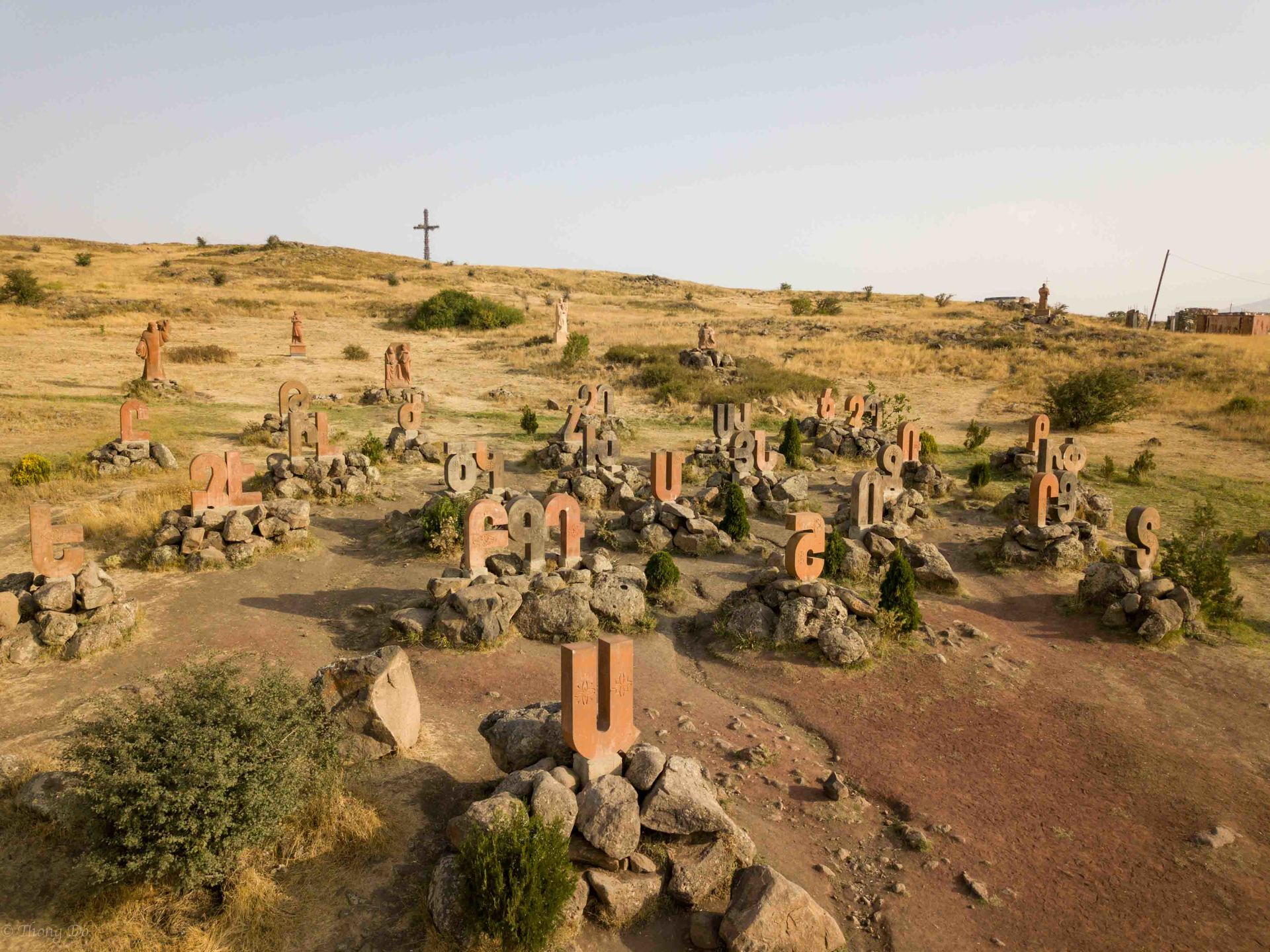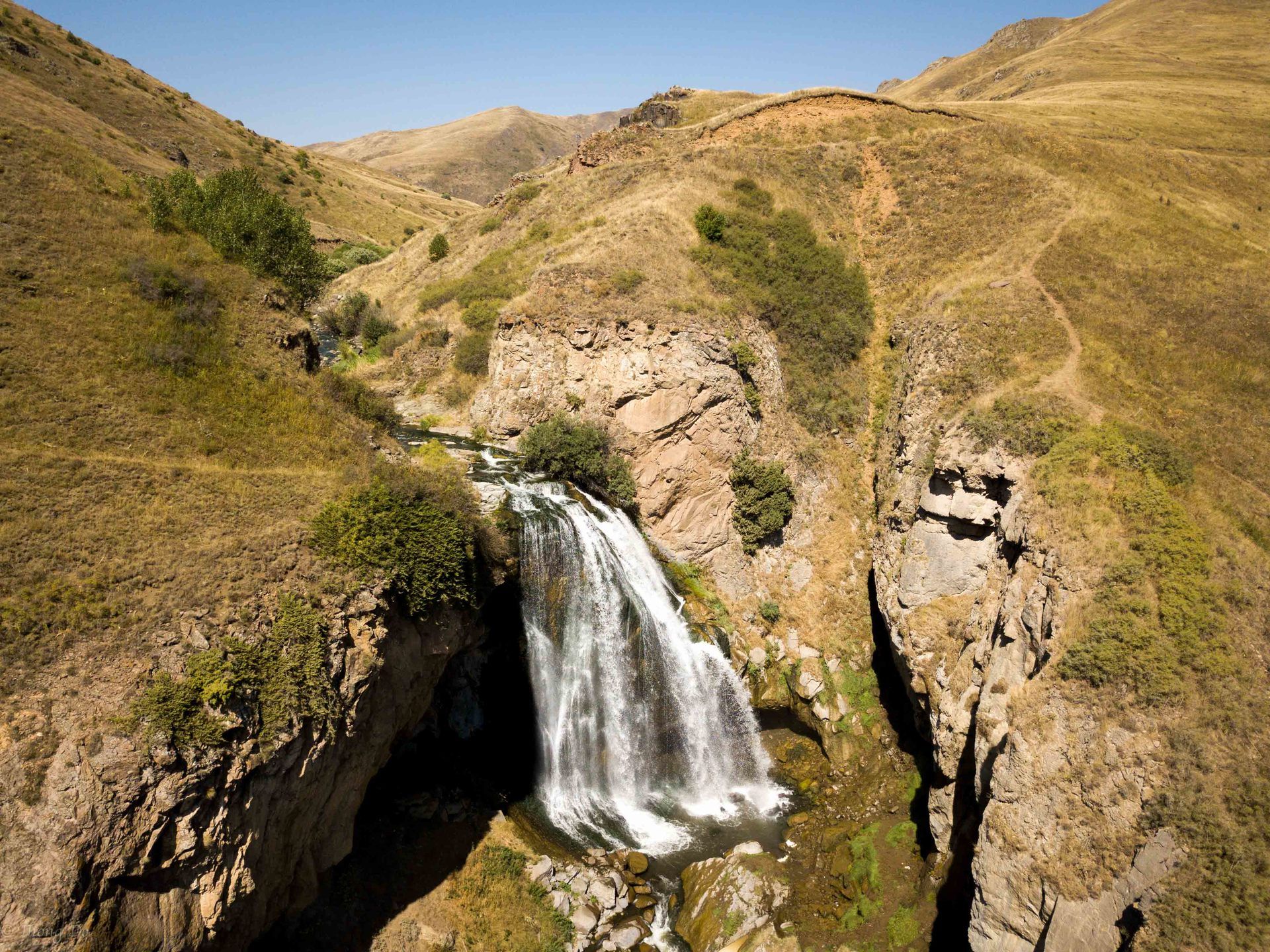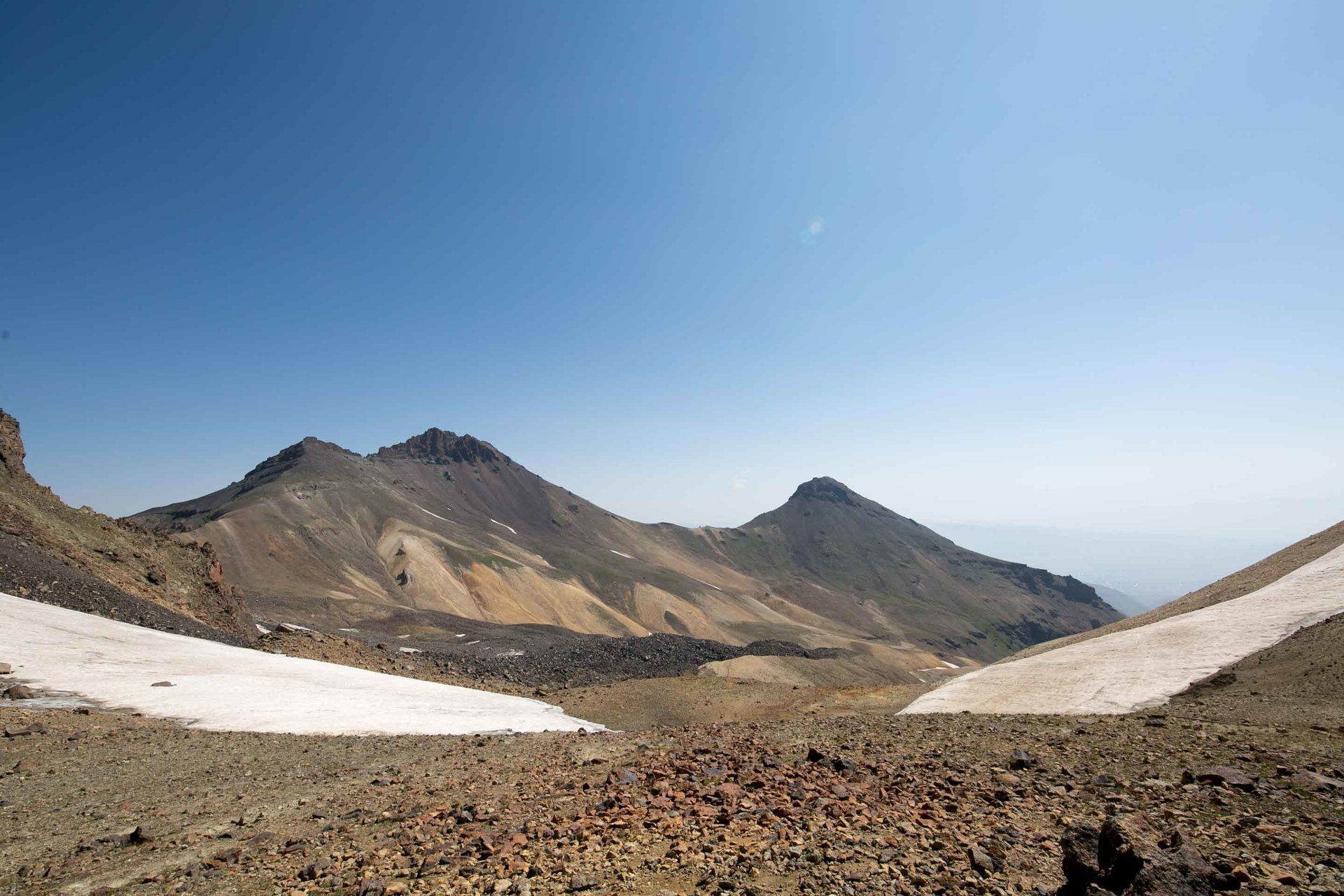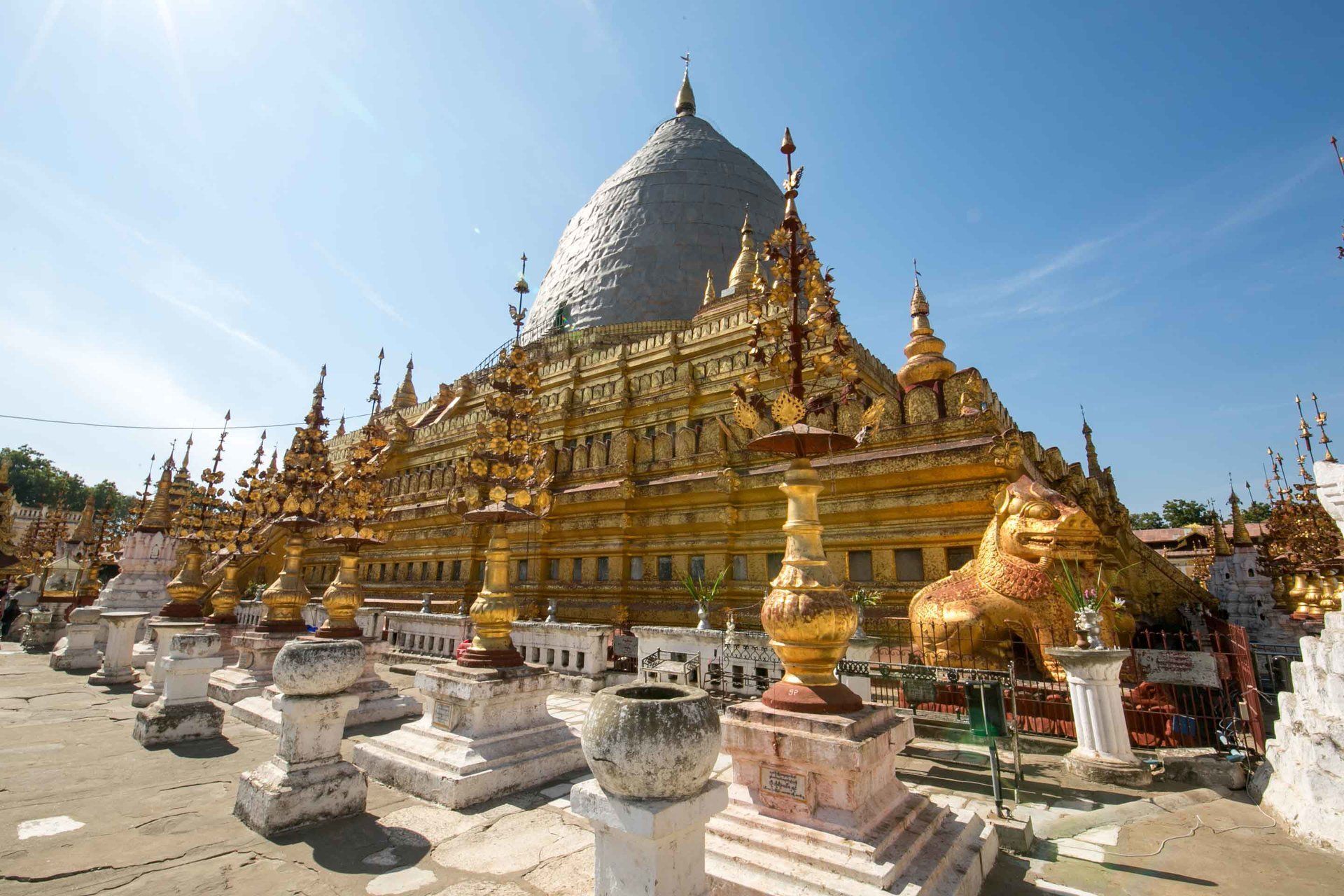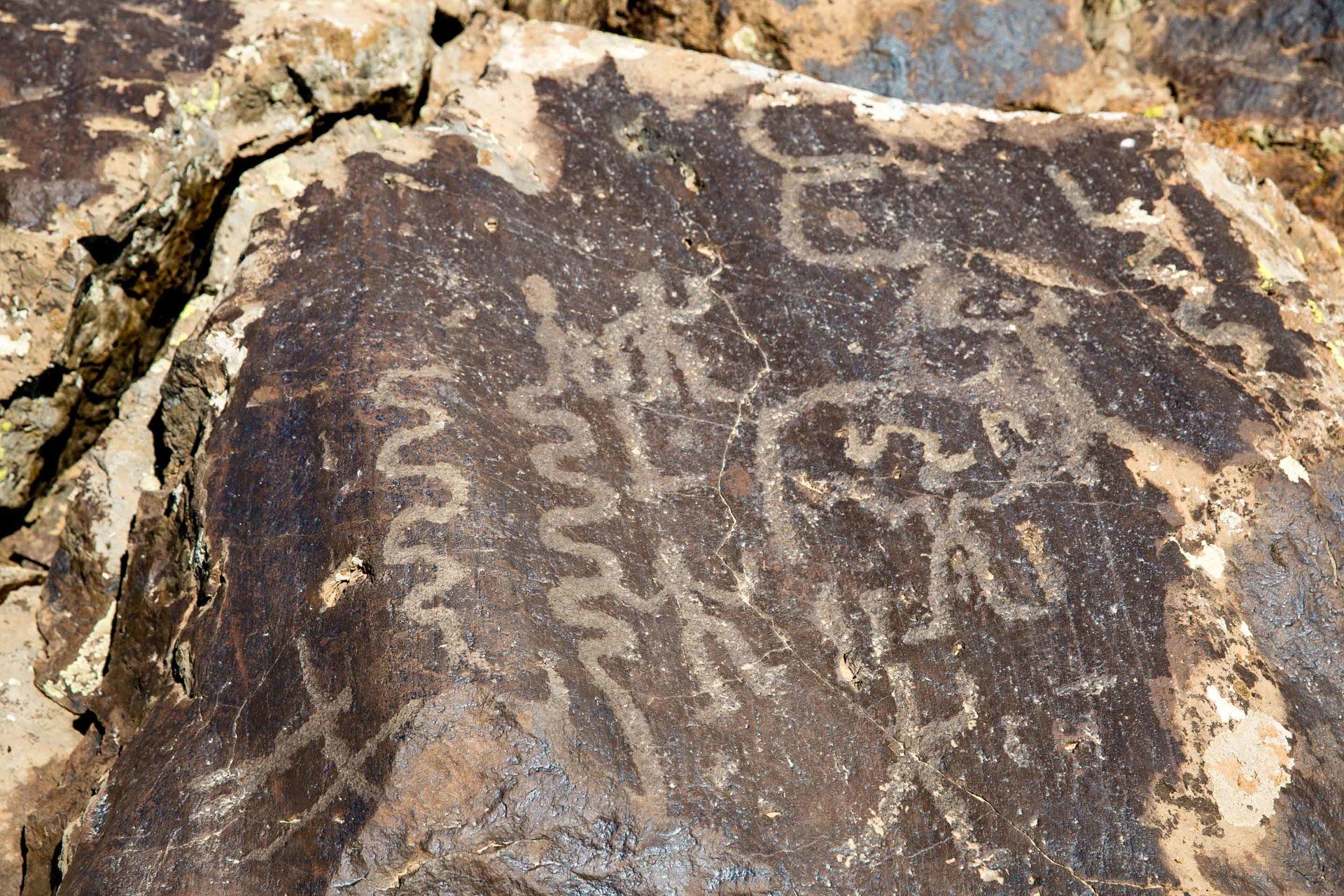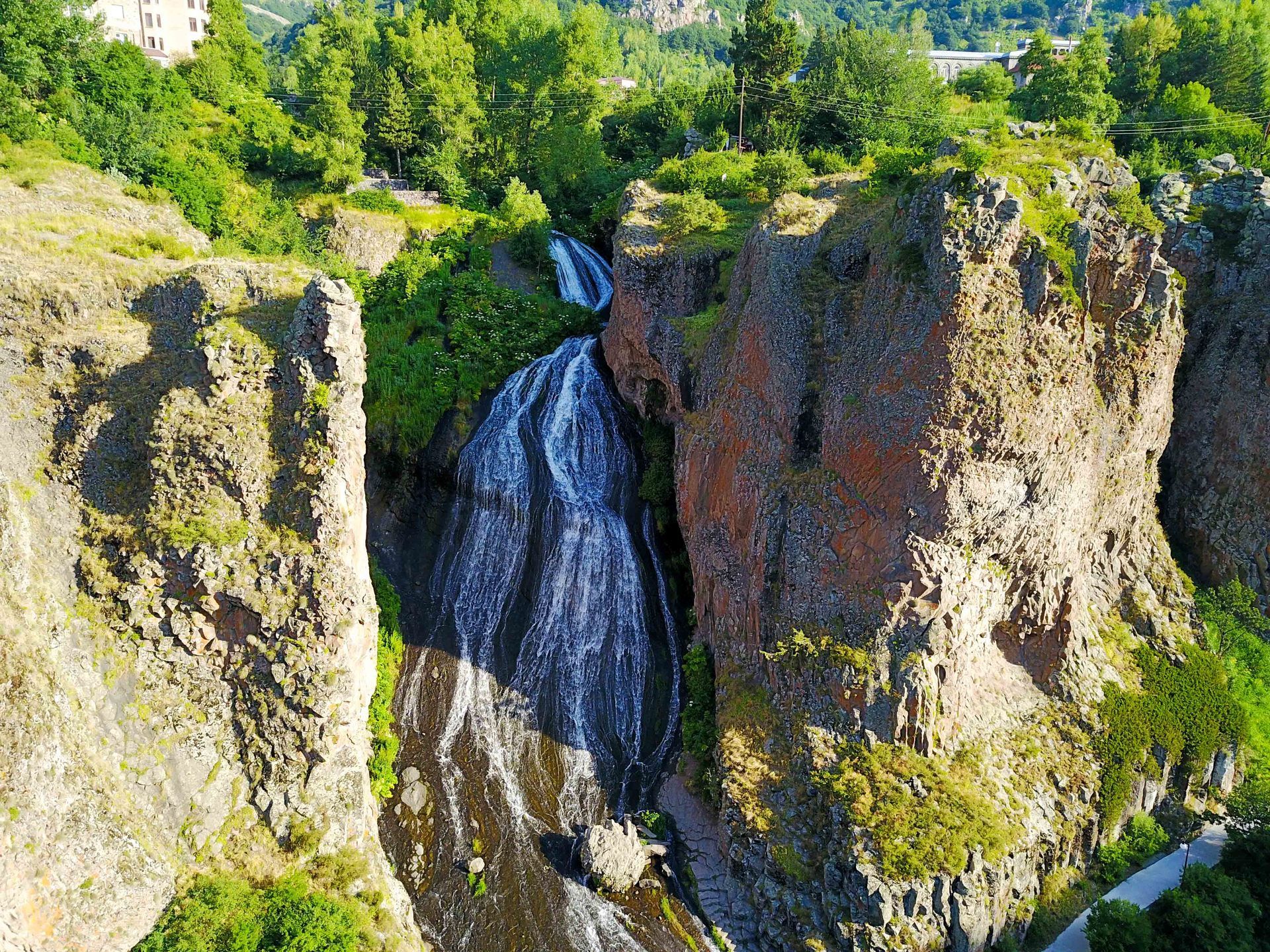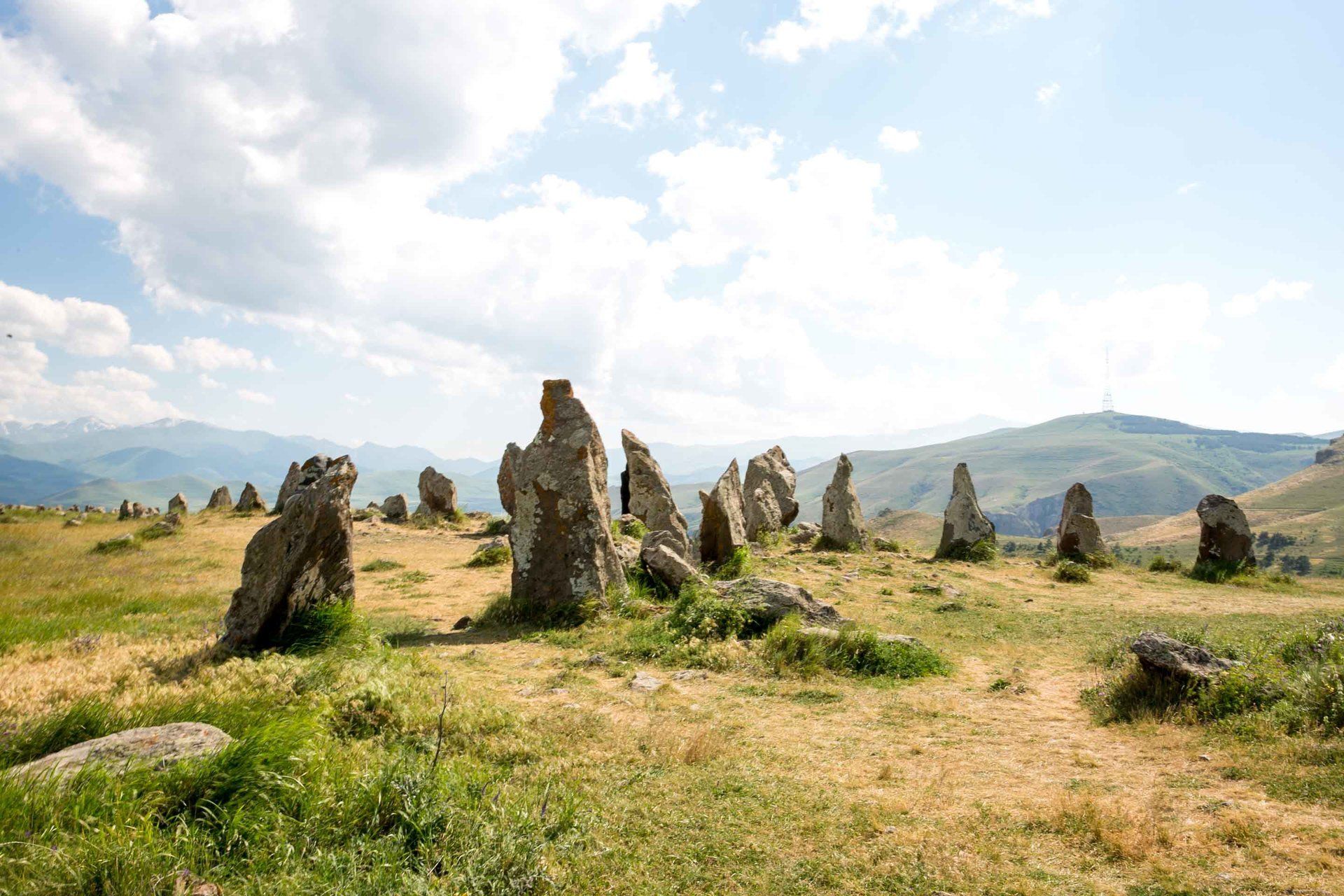What to see in Bago, Myanmar Part 1: The Kyaik Pun Pagoda, the Shwetalyaung Buddha, and the Kanbawzathadi Palace
- By Thong Do
- •
- 22 Jun, 2017
- •
If you’re in Yangon, Myanmar for a few days and have a free day to explore than you must check out the Bago region located just a few hours east of the capital. I had an extra free day in Yangon to explore but decided it’d be worth to see the amazing sights this region has to offer. One of the first places my tour guide took me to was the Kayik Pun Pagoda located on the southern outskirts. The Kayik Pung Pagoda translates to “4 Figures” Pagoda. Constructed by King Migadippa in the late 7th century and restored in 1476 by King Khammazedi, a devout Buddhist and King of the Mon Kingdom of Hanthawaddy, it consists of 4 gigantic Buddhas in the seated position and back to back with each other.
The Buddhas reach a height of 90 feet or 27 meters and can be seen from a good distance. This place is still an active area of worship and the images are highly revered by Laotian Buddhists. The meaning behind the four Buddha images is that they each represent reaching Nirvana: The Kassapa Buddha, the Kakusandha Buddha, the Konagamana Budda, and the Gautama Buddha. All 4 Buddhas are wearing gold robes with different facial expressions and are leaning against a large square brick.
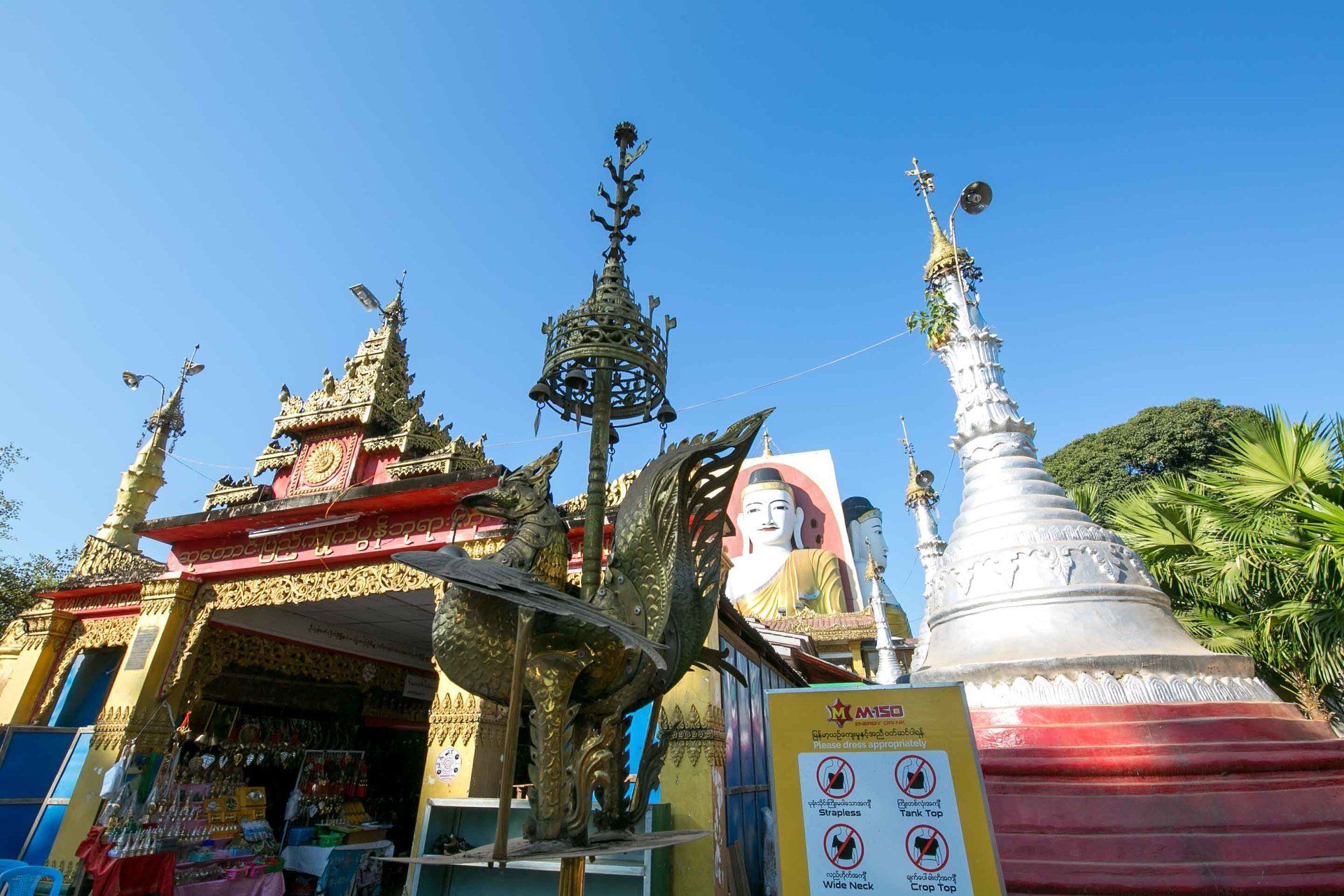

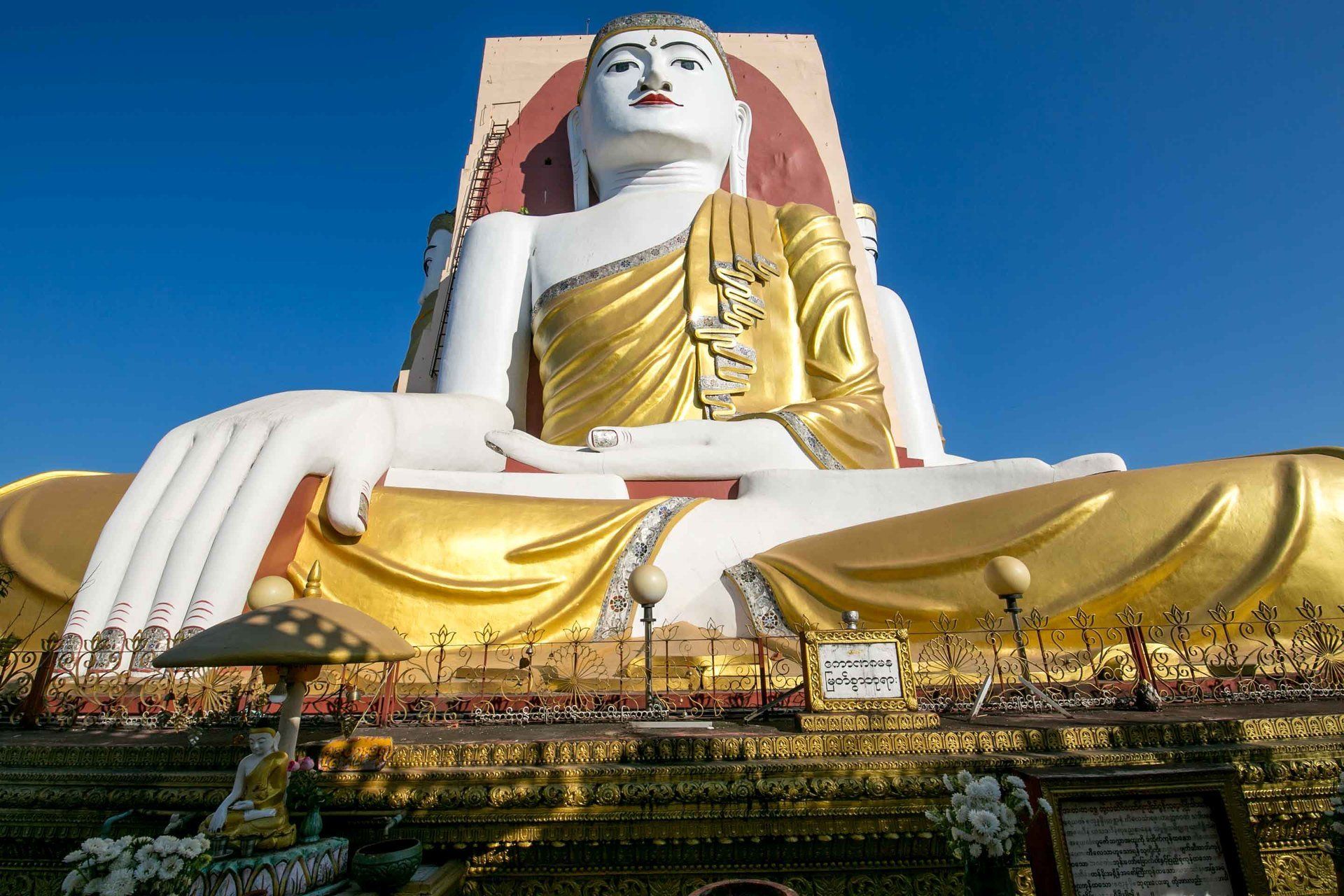
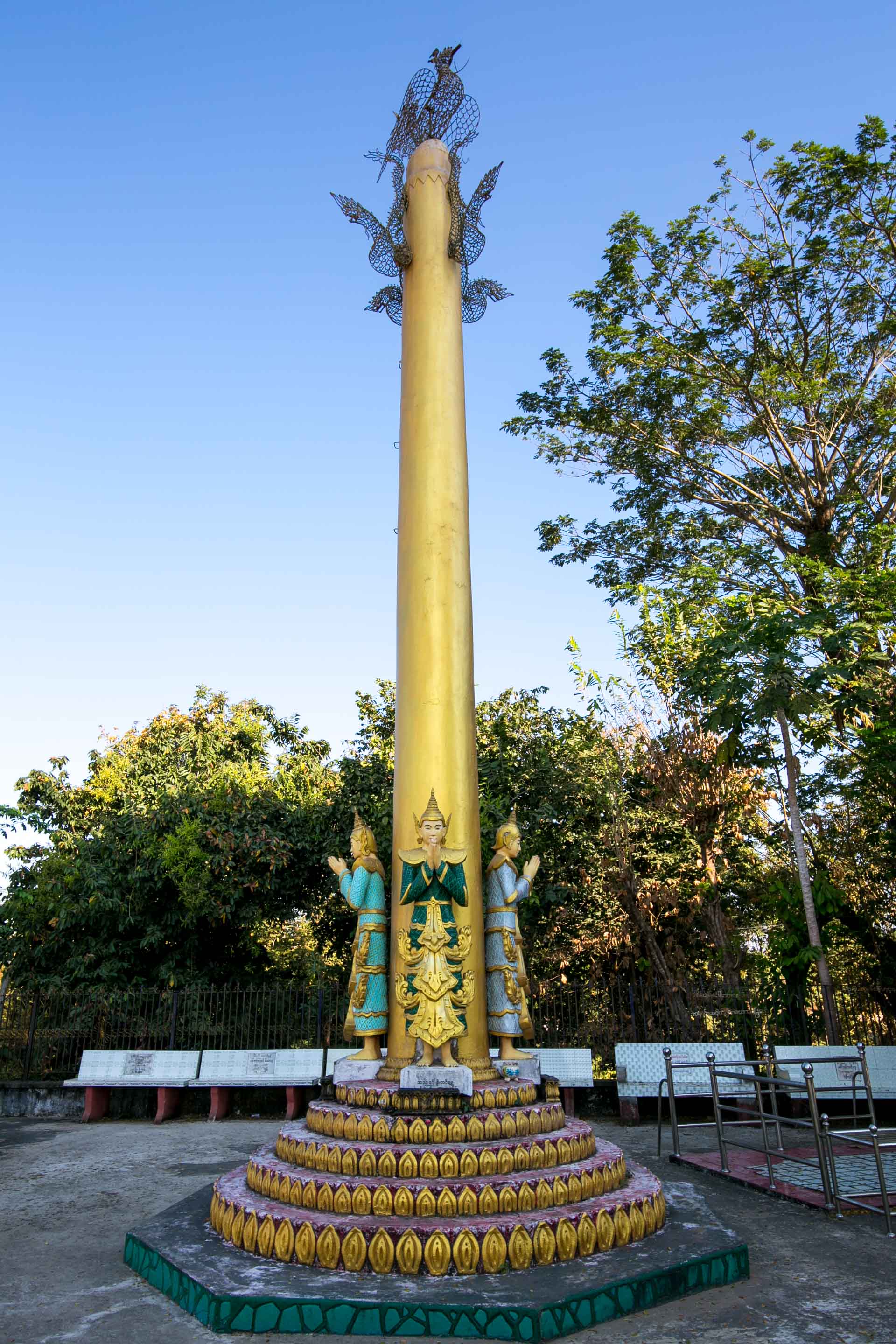
Although not a very large area there are other statues, pavilions, and small shrines there to see. There is an interesting local legend about he Kyaik Pun Pagoda. Locals say that four Mon sisters were involved in the construction of the Kyaik Pun Paya and that they all pledged never to get married as long as they lived. If one of them were to marry, then one of the Buddha statues would fall apart. One of the sisters broke the promise and got married and thus resulting in the collapse of the Kassapa Buddha. Not sure I believe it since earthquakes do happen but it’s an interesting legend.
The opening hours are from 6am-6pm and you must pay an archeological zone fee of about $10/person. The fee is good for all the other historical sites in the region too. If you have a DSLR camera they will most likely charge you a $3 camera fee. Remember that this is a religious institution so dress appropriately and remove your shoes upon entering.
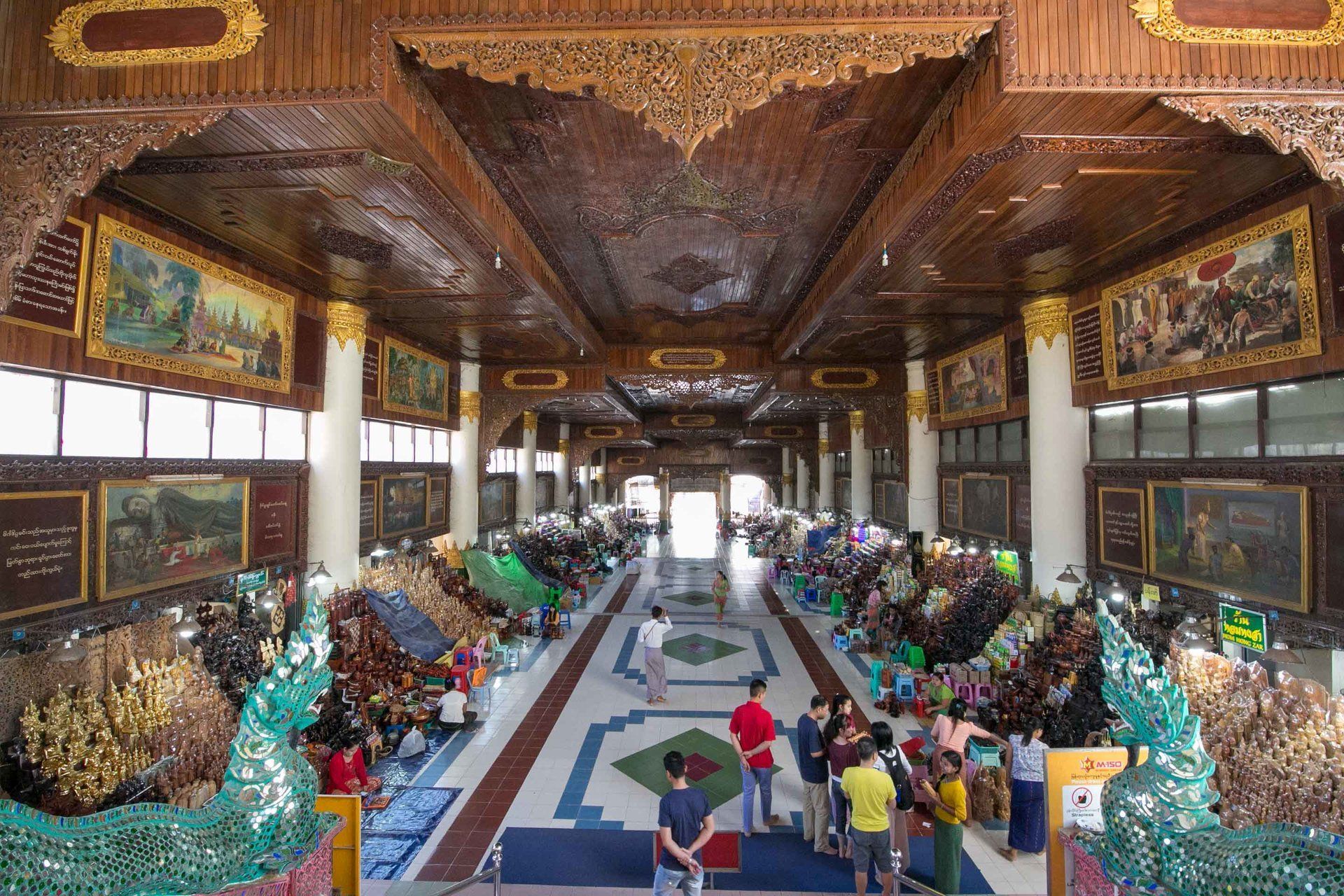
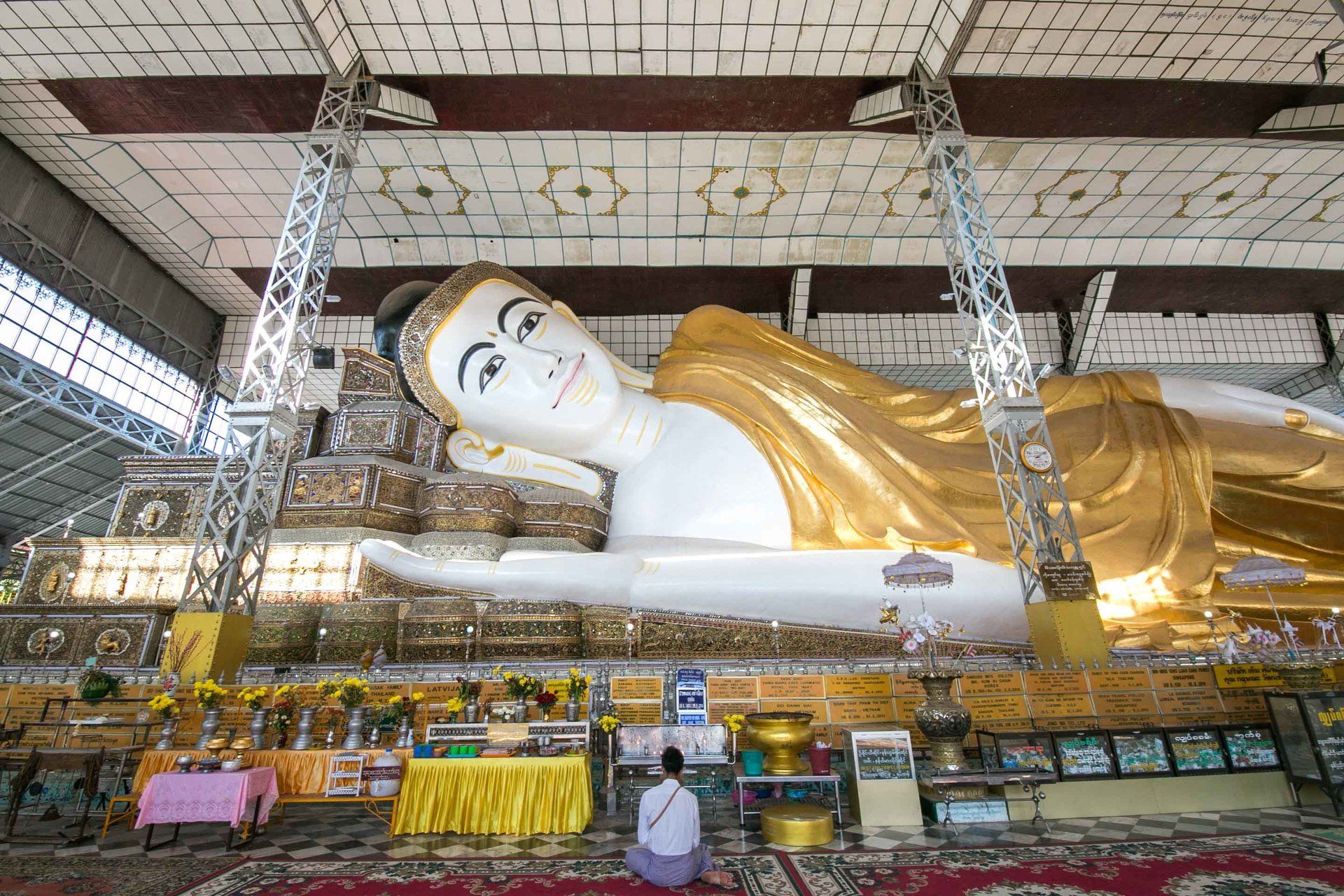
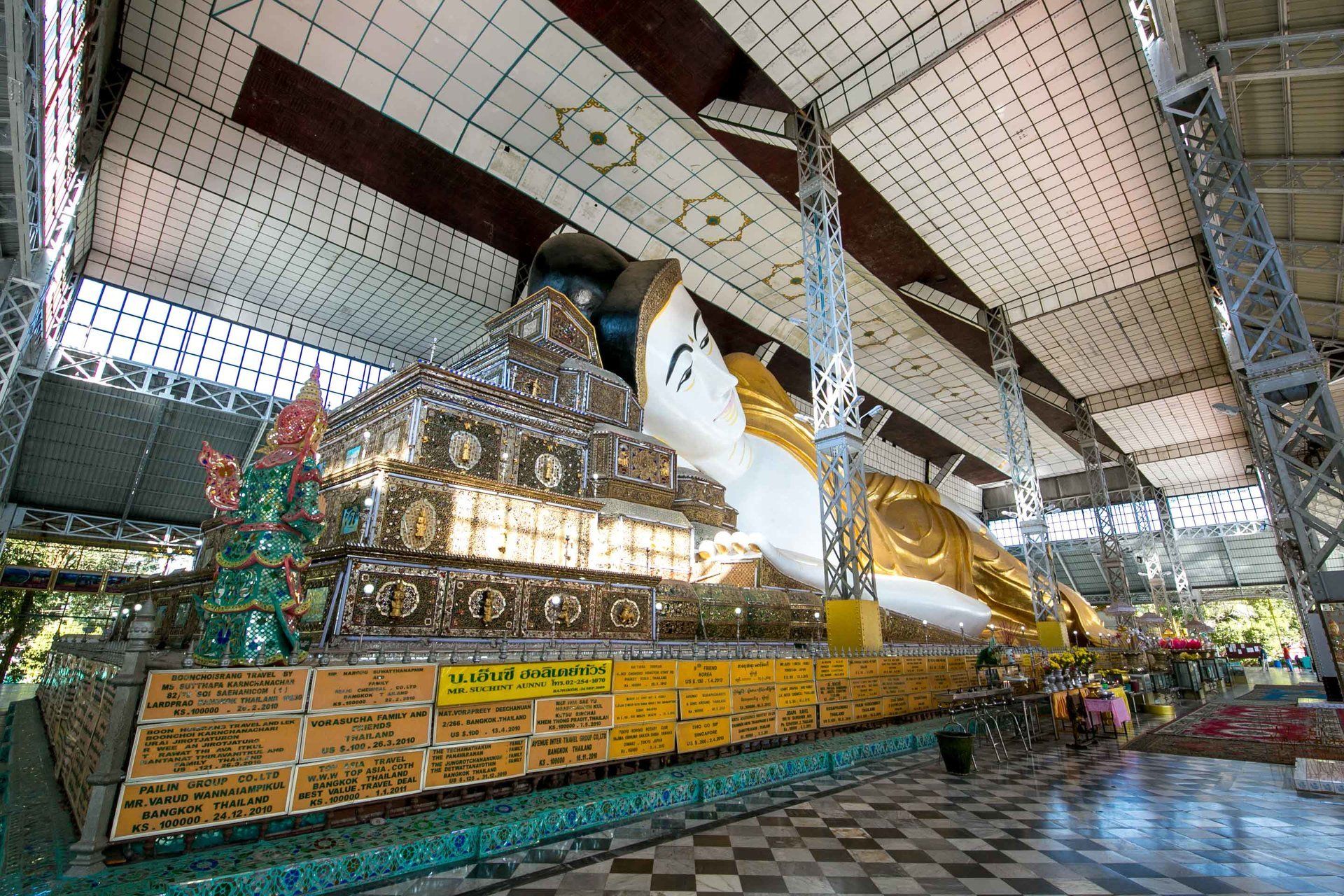
The other main attraction in Bago that my tour guide took me to was the Shwetalyaung Buddha. What makes this giant reclining Buddha so unique is that aside from being 180 feet long (55 meters) 52 feet high (16 meters) and believed to be built in 994 A.D., it’s one of the few reclining Buddhas in Myanmar that is actually laying on something. Most of the reclining Buddhas depict the Buddha resting on his arm and hand but this is resting on a pillow of caskets. The serene look on this Buddha is to depict him just before death and entering into parinirvana.
The history of the Shwethalyaung Buddha is quite interesting, built by the Mon King Mingaadeipka it fell into neglect and ruins and was later rebuilt by King Dhammazdi in the 15th century. After the destruction of Bago from the Mon revolt against the Burmese in the mid 18th century it was all but forgotten and overtaken by the jungle. During the British colonial rule, a railway was to be built between Bago and Yangon when it was discovered by chance. In the 1880s, a British survey team spotted the giant Buddha head protruding from the vegetation and the rest is history. Renovations then took place and iron tazaung (pavilion) was built to protect it from the elements. Slowly, more buildings were added to the complex.

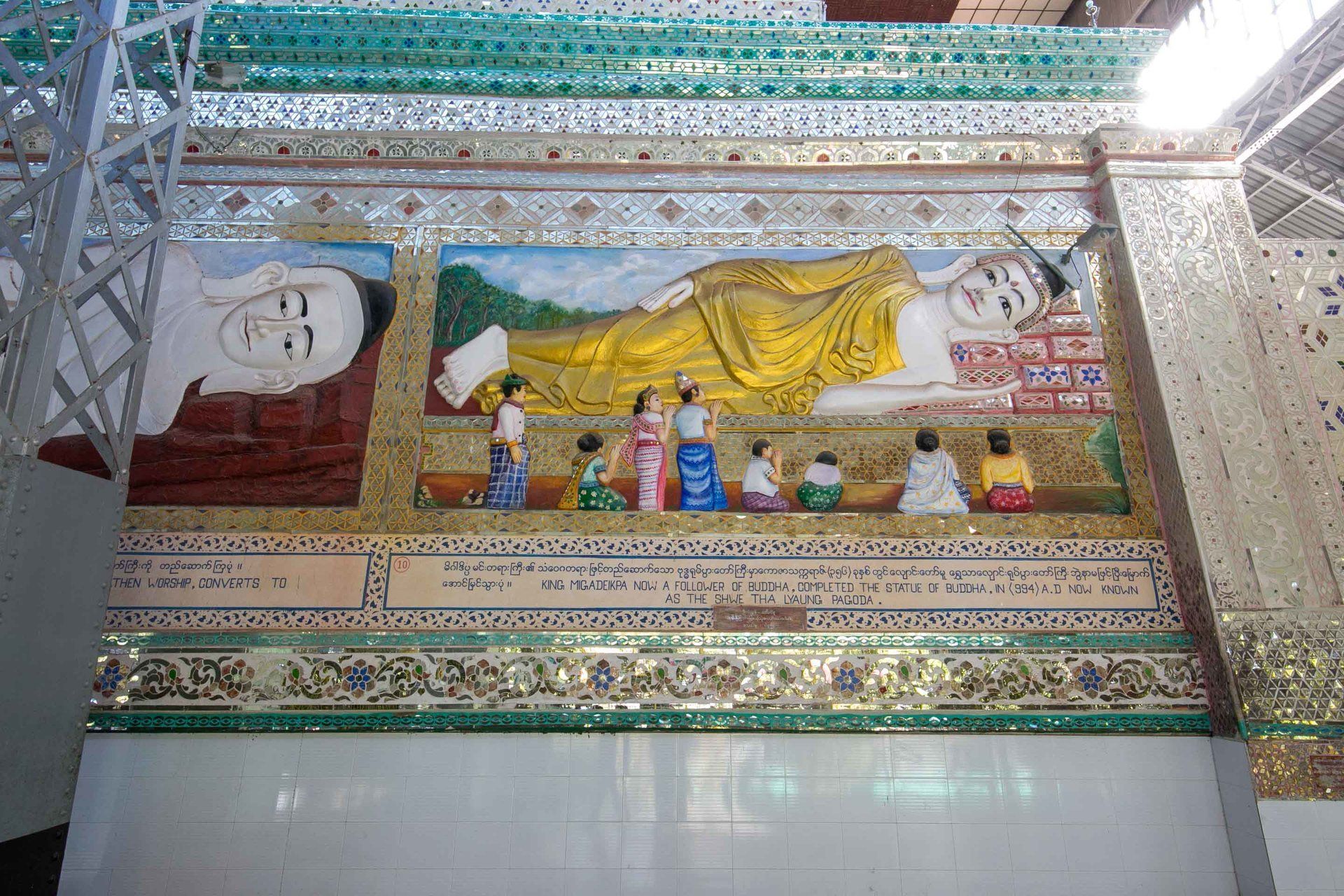
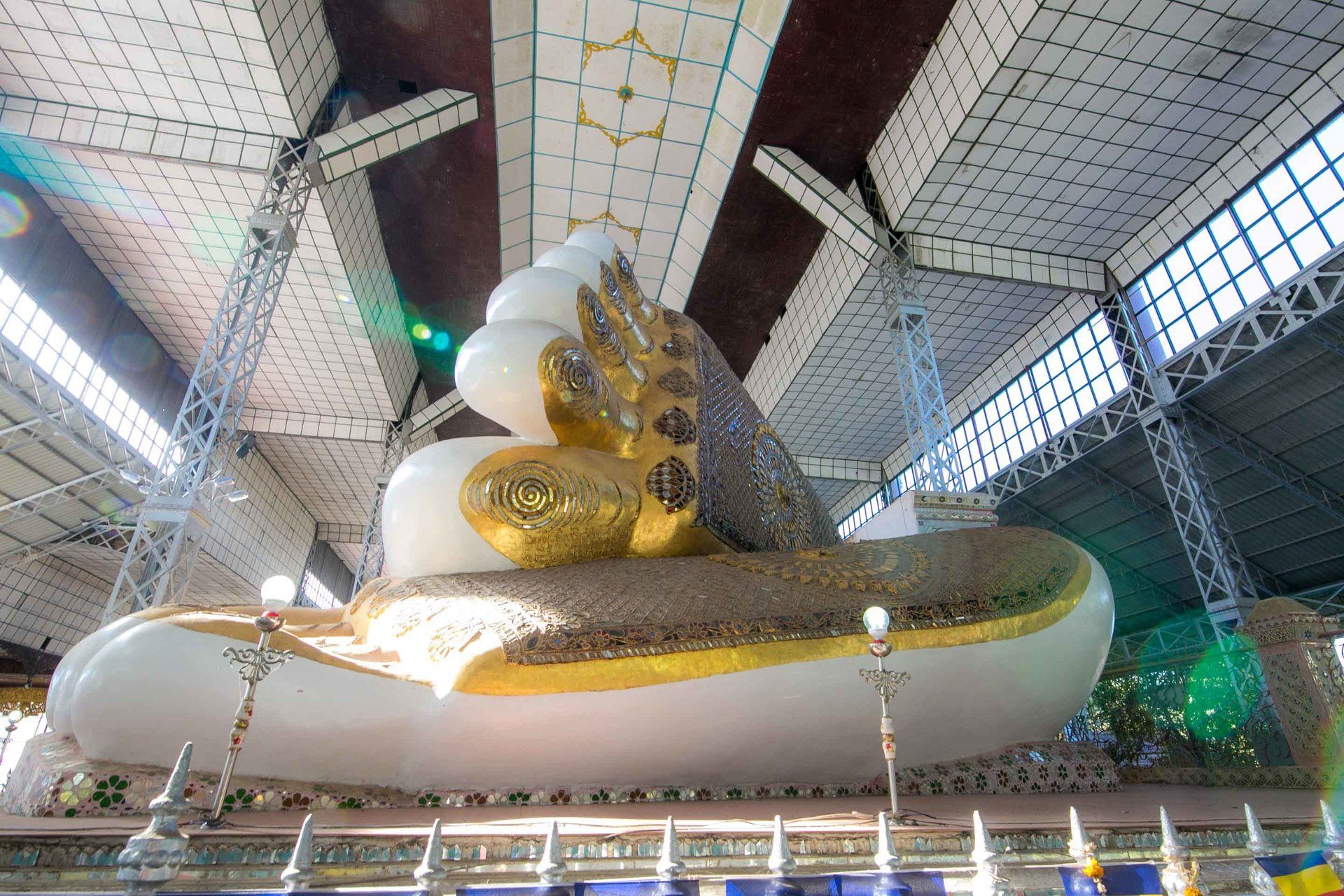
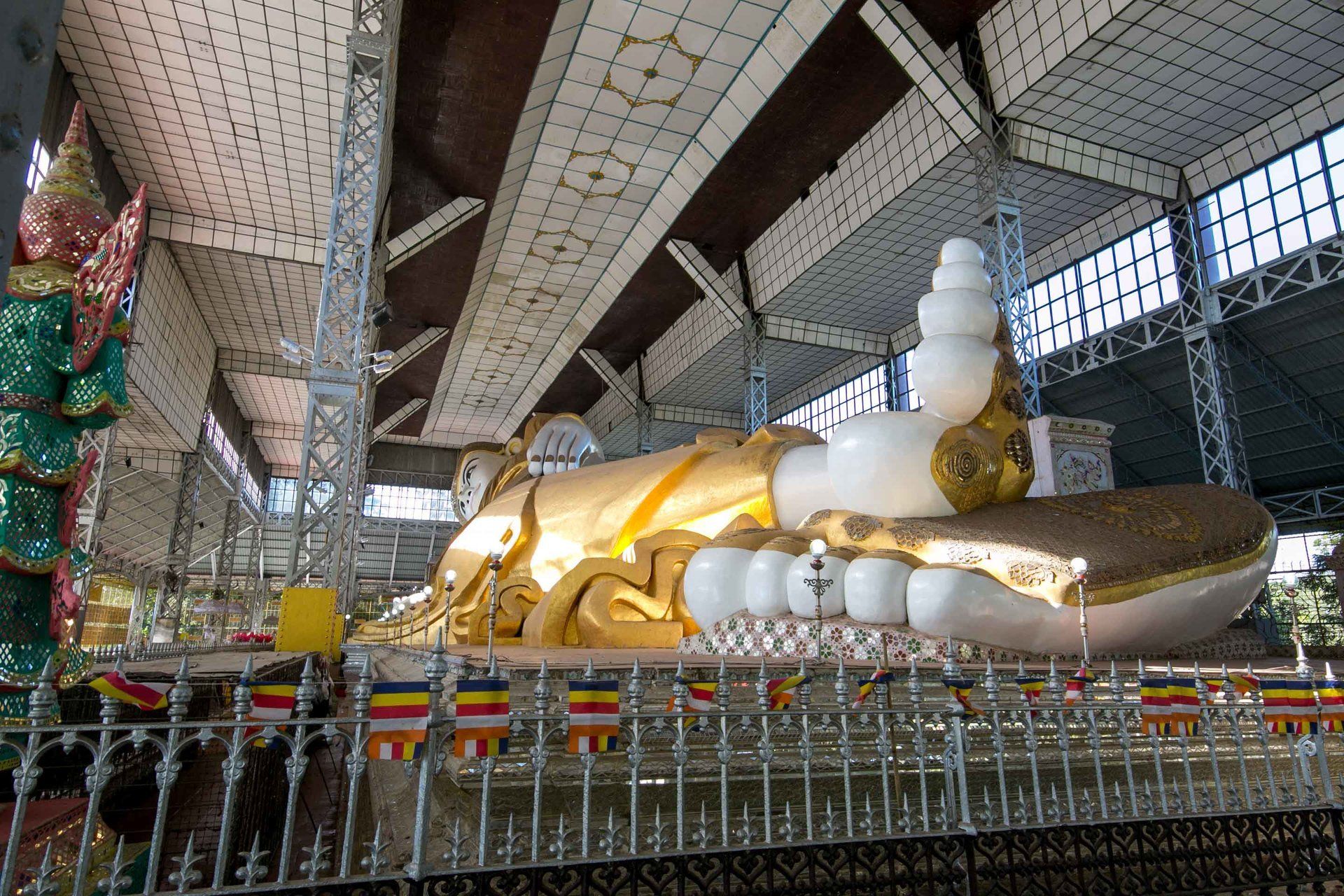
The first thing you see when coming to the complex is a cacophony of vendors selling souvenirs and other items to be used for offerings. The massive room the vendors are in is ornately designed and filled with beautiful large paintings. You just follow the steps up top to get to the main attraction. The first thing you notice is that the Buddha is wearing a golden robe and the pillow of caskets are intricately made and comes with a lot detail and sparkles. Along the fence you’ll see numerous signs of the names of benefactors who generously donated to it’s many renovations. On the east side of the base you can really see up close the details that went into it. The backside of the base shows numerous depictions of Buddha throughout his lifetime. Since it is 180 feet long there are plenty of scenes chronicling the Buddha’s journey in this world. The west side shows the Buddha’s bare feet and on the soles are images representing the 108 lakshanas or auspicious characteristics of the Buddha. Also, surrounding the reclining Buddha are various guardian Nats (spirits) that have been historically worshipped in Burma.
To thoroughly enjoy this area it should not take you more than 45 minutes. This complex is open daily from 6am-9pm. Be mindful of how you dress when entering and remove your shoes when entering.
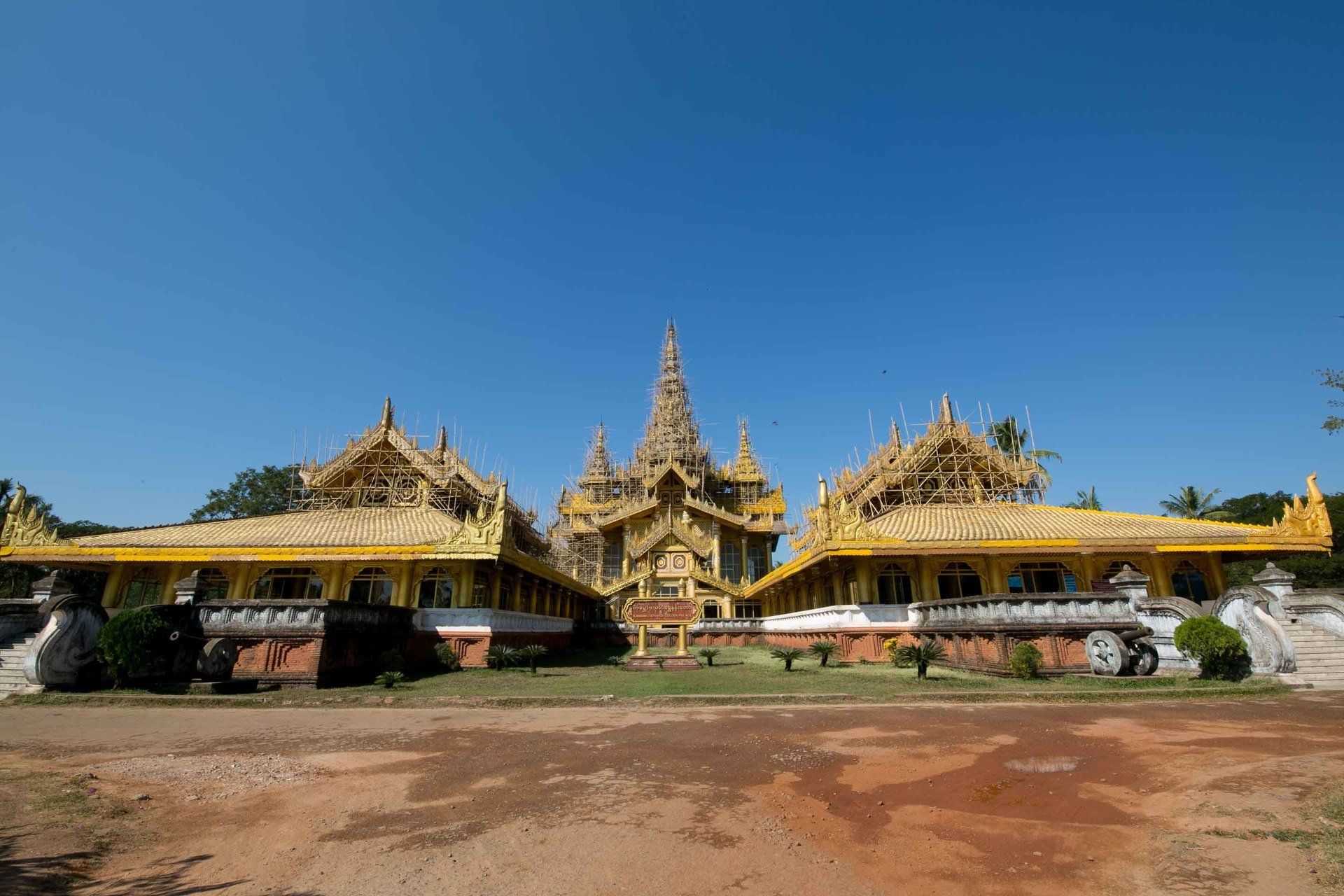
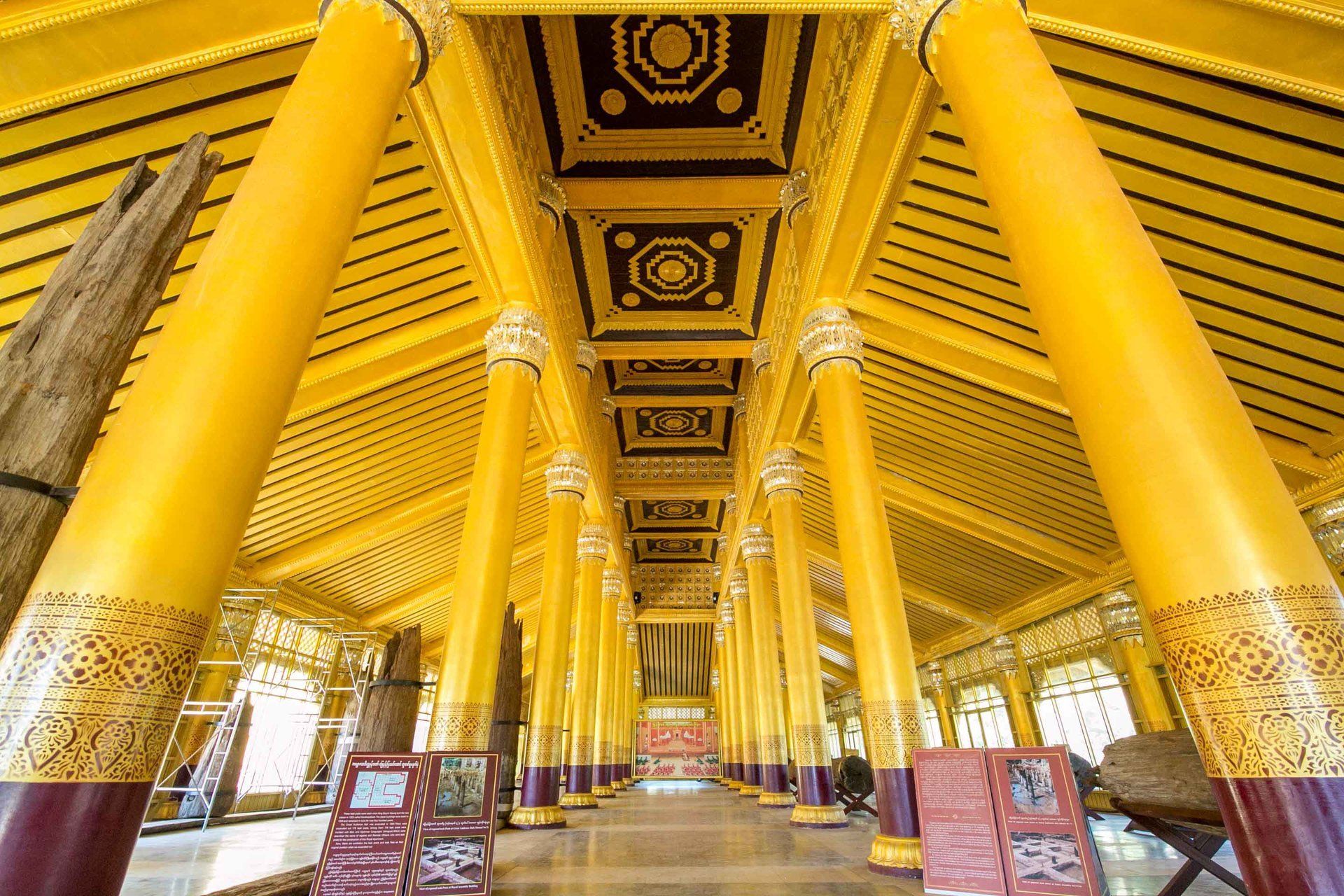

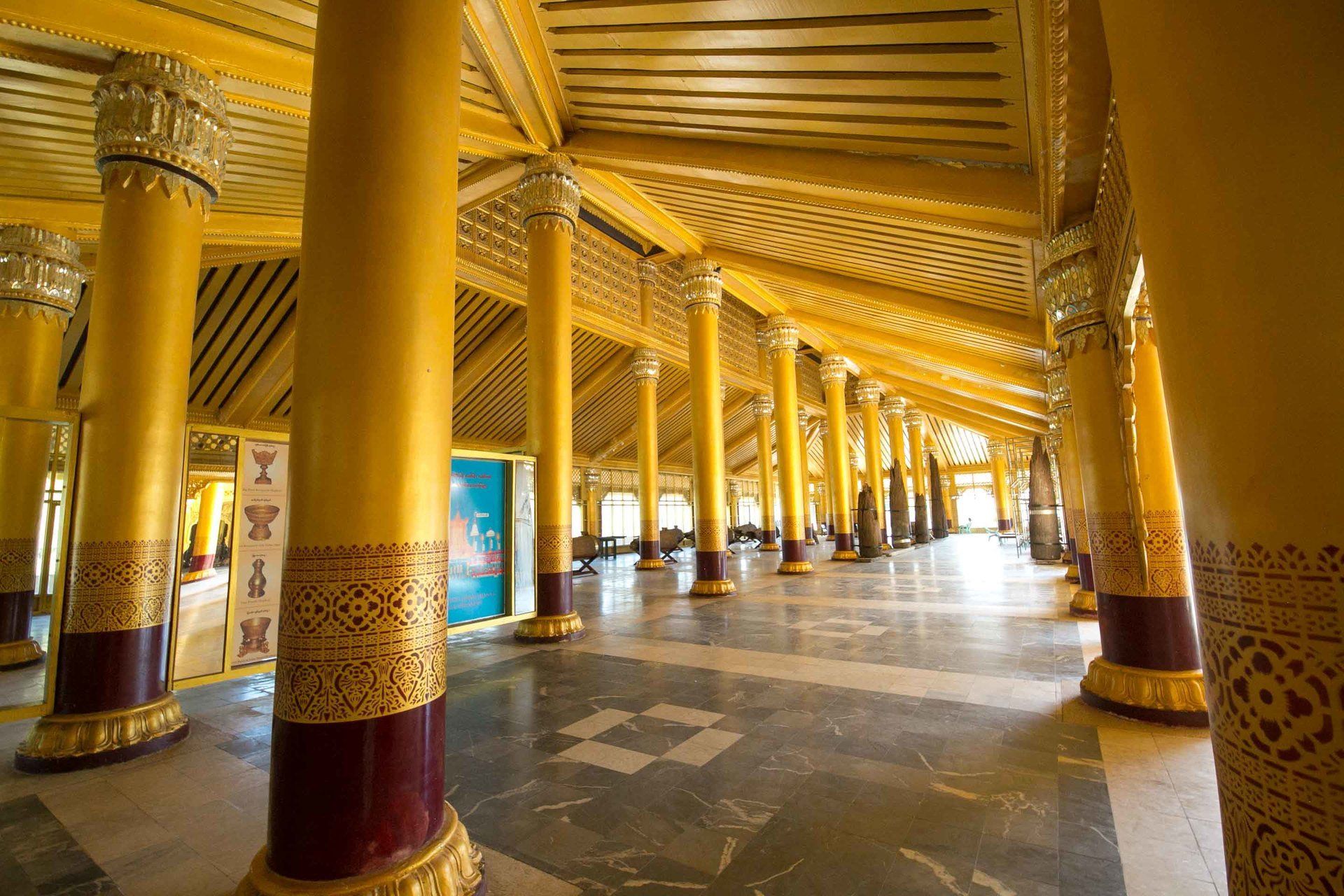

The other interesting spot that my tour guide took me to was the Kanbawzathadi Golden Palace and located just south of the Shwemawdaw Pagoda. The original palace was looted and burned down in the late 16th century during armed conflict and it wasn’t until the late 20th century when the remains of this great structure were found. Traces of huge post holes and brick foundations were discovered in the vegetation and hundreds of the original teak pillars used for the construction of the palace in the 16th century were found, many of them inscribed with Mon texts and nearly 2,000 Buddha images as well.
This palace screams wealth and opulence and was rebuilt following the original design. No expense was spared since this was made at the peak of the second Burmese Empire. Most of the items on displays are replicas since the originals were either looted or destroyed. The Golden Palace was built by King Bayinnaung of the Taungoo dynasty, a powerful empire that includes modern day Myanmar, Thailand, and southern China. As one of the most powerful kinds of Burma, King Bayinnaung’s reign lasted between 1516-1581 and took the city in 1551 with a combined force of his own elephant divisions and Iberian mercenaries. The Court records that in a last bid to save his capital, the Mon leader, Smim Htaw challenged his Burmese nemesis to single combat on the back of an elephant, a duel that Bayinnaung won with ease.
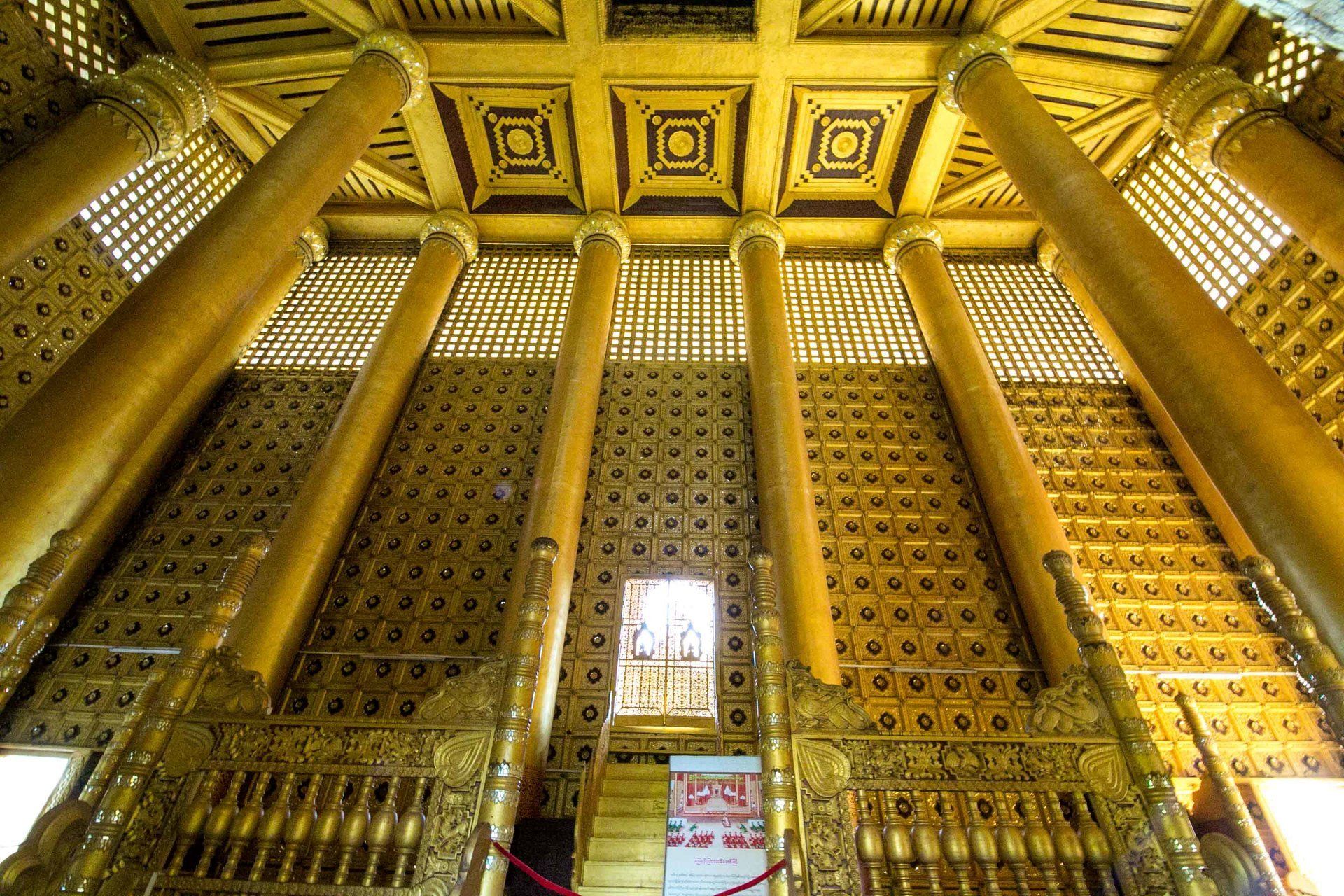

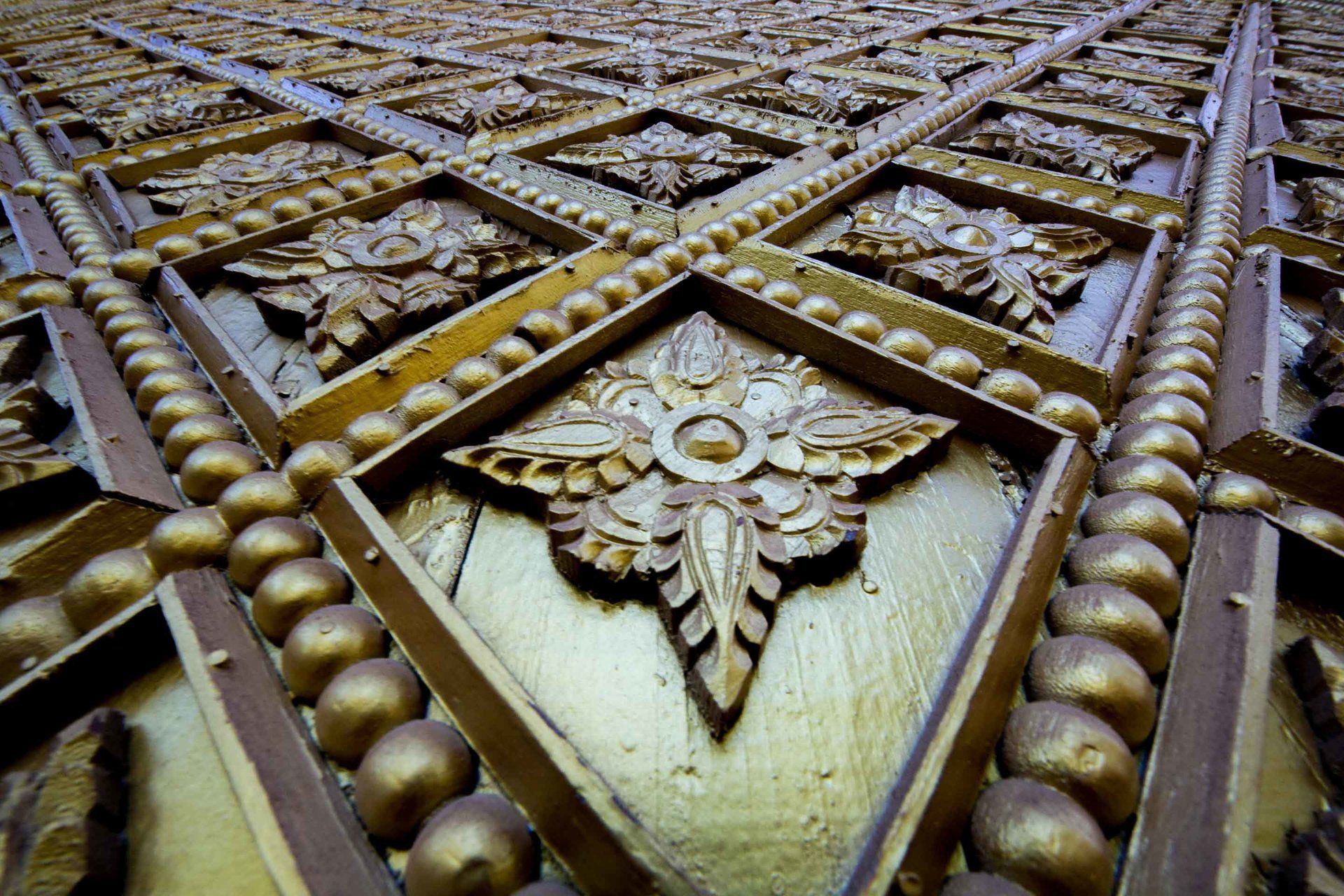
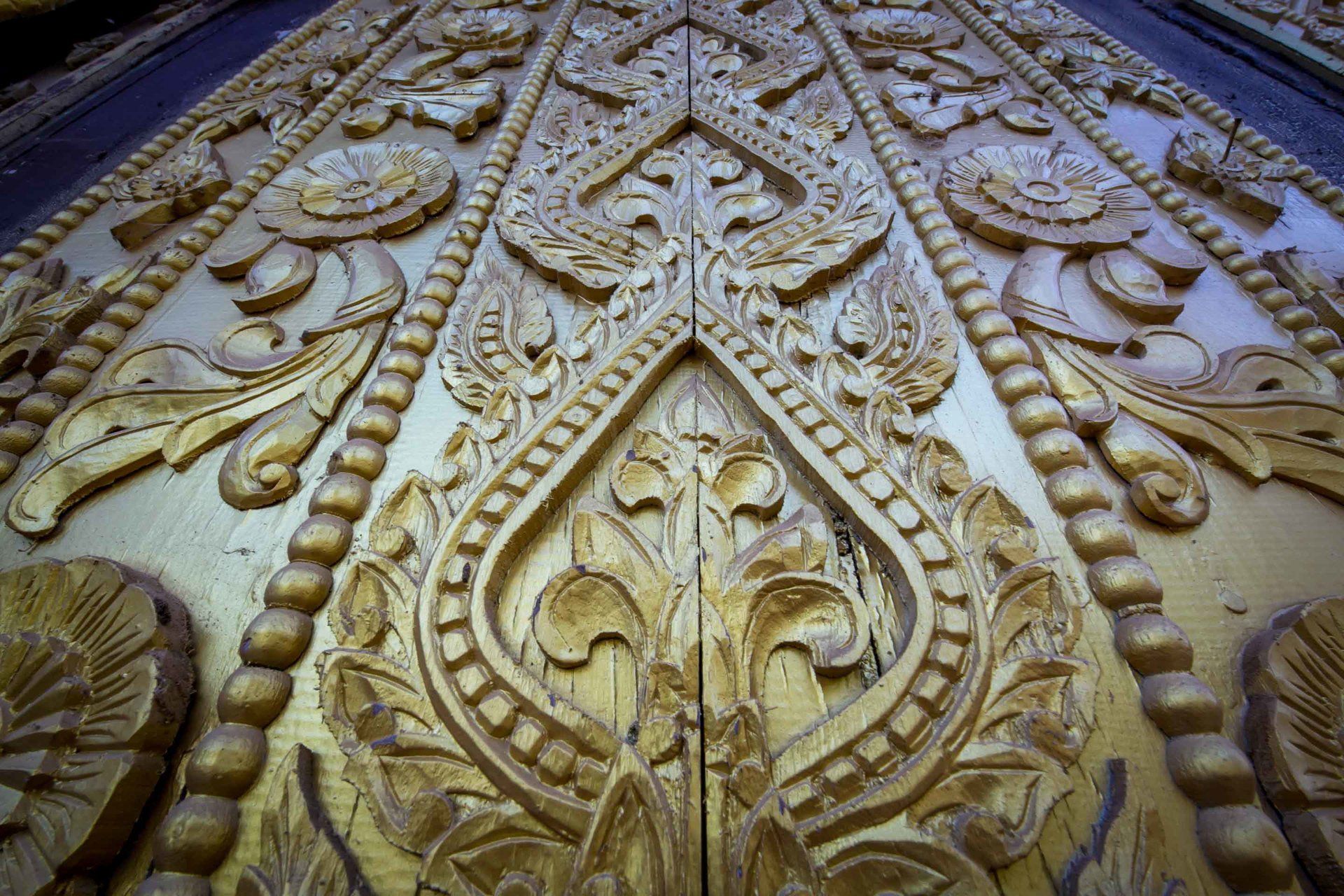
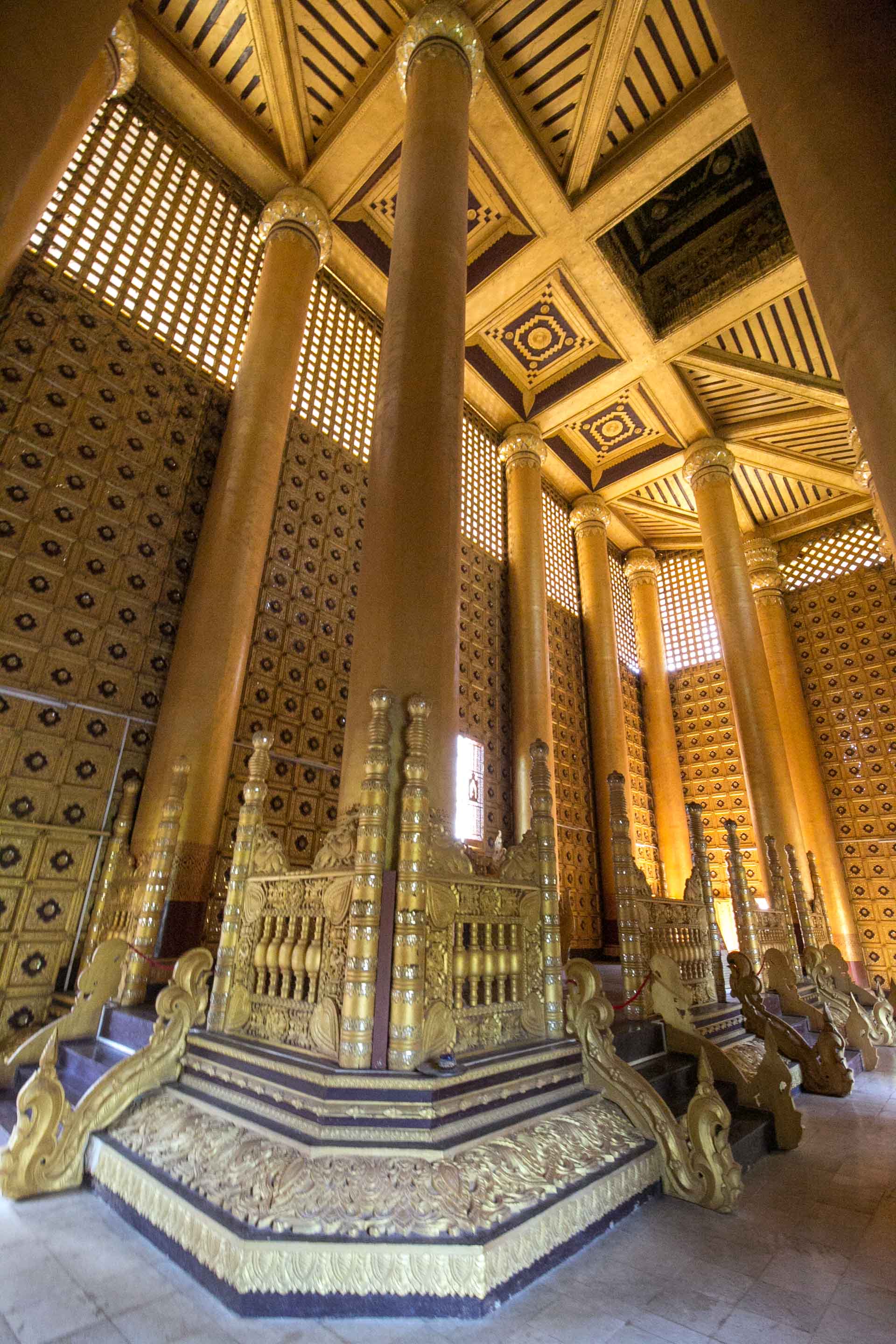
When I visited here in January it wasn’t that crowded so I was able to take my time and enjoy the attention to detail. Although several buildings have been rebuilt my favorite site inside were the Great Audience Hall. It was where the King would officially meet with officials and royal ministers. It was the elaborate throne that caught my attention due to its grandness and opulence. The other interesting thing is that there a number of the original teak pillars used to help support the roof, it’s next to where the original was placed. A large percentage of the teak pillars found still have the inscription in the Mon language with the names of the towns, regions, and benefactors who contributed to this endeavor in the 16th century.
I spent a total of an hour here and it was well worth the visit. The palace opens daily from 9am-5pm unless there is a holiday. Due to the size of this palace I used my wide lens camera most of the time to give an idea of how grand it is.
Happy traveling…
